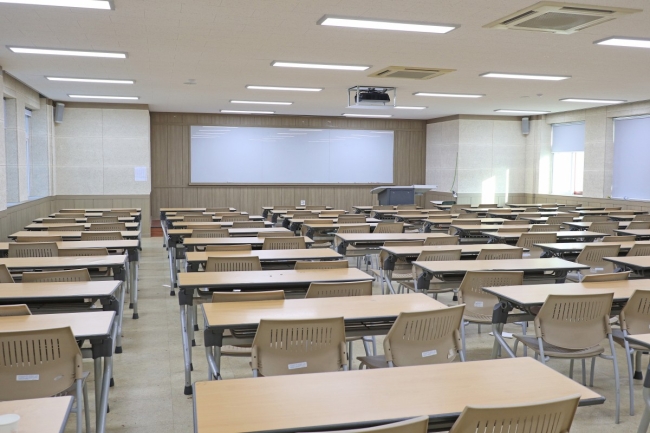You have /5 articles left.
Sign up for a free account or log in.

Istockphoto.com/cgj0212
SCOTTSDALE, Ariz. -- An annual gathering for presidents of mostly small private liberal arts colleges started with worries about whether the kids are all right. It was soon evident presidents continue to wonder the same about the institutions they lead.
Neither issue could be resolved in the conference's span of a few days. The pressures leading to rising rates of mental health issues among students, clashes over free speech at college and protests on campus didn't develop overnight. Nor did the demographic shifts, enrollment trends and public doubts about the value of higher education that have combined to threaten the future of many tuition-dependent colleges.
But if presidents couldn't find a quick fix for those problems -- which seem to fit under what one leader called a broader “culture of insecurity” on campuses and in the country -- there were at least signs they are thinking about the things they can control in increasingly sophisticated ways.
The gathering of presidents, the annual Council of Independent Colleges Presidents Institute, represents a chance for executives to escape the fishbowl of their often-intimate campuses and find moral support among those who affirm their work as valuable. CIC as an organization has long filled a role as a cheerleader for small colleges.
Last year's Presidents Institute was therefore remarkable for shifting toward more heavily addressing the numerous problems small colleges face. This year, the shift continued.
The first two presentations on the program set a tone, reigniting long-running conversations about whether the term “liberal arts” has any widely understood meaning and whether students feel a sense of belonging on campus, among other issues. Saturday morning, presidents and other attendees heard from Jonathan Haidt, professor of ethical leadership at New York University and one of the authors of The Coddling of the American Mind: How Good Intentions and Bad Ideas Are Setting Up a Generation for Failure (Penguin Random House), which argues in part that society is not preparing students to have their ideas challenged.
The night before, Howard Gardner, the Harvard Graduate School of Education professor best known for his theory of multiple intelligences, presented some early insight from a large national study about higher education and the arts and sciences that has been under way since 2014. Gardner and his team interviewed more than 2,000 students, faculty members, trustees, parents, alumni and others affiliated with 10 institutions of different types. Although they are still analyzing data, their early takeaways included that the phrase “liberal arts and sciences” isn't widely understood. Many respondents couldn't define the liberal arts at all or defined it incorrectly.
Along similar lines, few students provided specific or workable ideas when asked what changes they would make to an institution's curriculum. On these points, Gardner offered some affirmation to presidents attending: he said students' lack of suggestions means leaders have curricular flexibility, and he sees hope for the liberal arts blended with some broad vocational education.
Among his other takeaways were that most colleges are similar to one another and confront the same issues; that institutions' missions must be understood by all constituencies from student to trustee; that students want investments in the people who teach and advise them instead of investments in buildings; and that institutions must think carefully about investing in only those programs with staying power as they seek to address misalignment.
“There are so many different programs on college campuses that often students and faculty don't even know what their own programs are,” said Wendy Fischman, project director at the Harvard Graduate School of Education, in a follow-up session elaborating on the study. She suggested zooming in to “focus in on what is the one misalignment that we want to address, and how do we get there rather than trying to do too much?”
Researchers also asked students to describe other students at their colleges or universities. Of 800 different adjectives provided, the most common was "diverse."
That may not come as a surprise to college leaders, particularly those talking about strengthening their institutions in the face of demographic shifts by enrolling new adult students or students from traditionally underrepresented groups. Gardner made an important observation, however.
“Schools which very quickly change the demography were often unprepared to deal with the demographic changes,” he said.
Few if any would say enrolling students from different populations is a bad idea -- on the contrary, most in attendance spoke of numerous ethical and financial arguments for doing so. However, colleges that shift enrollment will want to remember that time and resources are required to make sure the new student groups are supported and welcomed on campus.
It is clear from conversations with presidents and their remarks in breakout sessions that they are considering the ramifications of changes they may have to oversee in order to keep their institutions viable. On the topic of mergers, presidents brought up complicated ideas like whether an acquiring institution can expect a bank to discount the debt an acquired college owes. Presidents presenting in a session on mergers also addressed issues like accreditation, regulators and emotion.
The regulatory world tries to favor institutions remaining open through mergers, said David R. Decker, president of Franklin University in Ohio, which acquired Urbana University in 2014.
“But when it comes to actual accommodation of showing flexibility in standards and so forth, that won't happen,” he said.
Emotions run high among the different groups connected to a college involved in a merger situation, Decker said. It's a fact another presenter at the session knew well. Gregory Dell'Omo is president of Rider University, which has faced intense opposition as it seeks to sell Westminster Choir College, an institution it acquired through merger in the 1990s.
Such cases could lead presidents and boards to think twice about mergers.
“I don't think you're going to see a lot of movement in this area until you see success stories,” Dell'Omo said.
Outside of official sessions, presidents and other leaders discussed ideas to cut costs or increase revenue -- like an 18-member consortium birthed at a meeting in 2015 or sources of low-cost financing.
Back in sessions, they grappled with the same issues.
“Everybody's trying to drive revenue and solve our problems on the revenue side,” said Lawrence Schall, president of Oglethorpe University in Atlanta. “But when I talk to presidents about this issue of what they spend, the answer I hear is, 'There's not much I can do about what we spend.' I think that's a bad place to be.”
A common theme was finding ways to save, then reinvest wisely.
“It is not just about balancing anymore, which is the predominant conversation that we've had for years and years and years,” said Elizabeth Paul, president of Capital University in Ohio. “How do we educate the community to understand how it's working now but then start shifting toward points of opportunity?”
Small-college advocates often say the sector has been remarkably resilient and adaptable over the years. A sampling of presidential remarks shows some of the ways they are trying to adapt. They talked about the soft skills required to formulate strategy and change institutional culture. They discussed specific pricing strategies like tuition resets, and they addressed ways to attract students by emphasizing internships and alumni connections.
When it came to students -- kids and adults -- some called for meeting them where they are. David W. Andrews, president of the California-based National University, which has a massive online operation, spoke in a session about leading strategic change. One anecdote he gave was from when he was teaching a course online and found himself texting with students while he was in a Board of Trustees meeting.
“When the board members asked what I was doing, I said, ‘I’m instructing, I’m in the middle of class,’” he said. “Real-time, on-demand expectations of students are changing dramatically the way the interaction occurs between faculty and students.”




